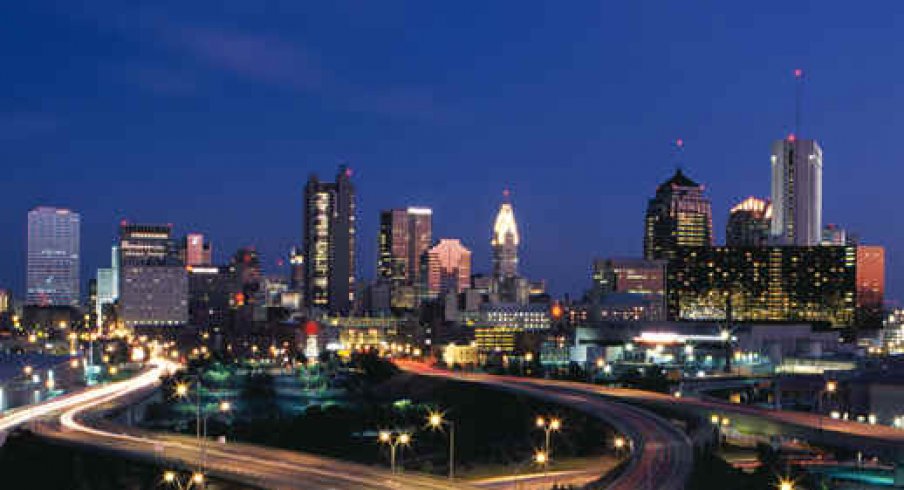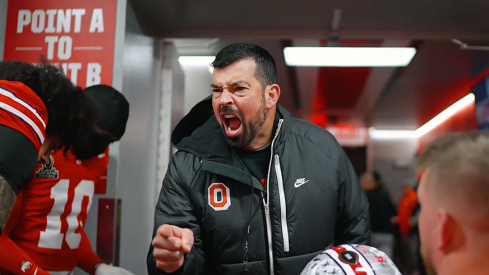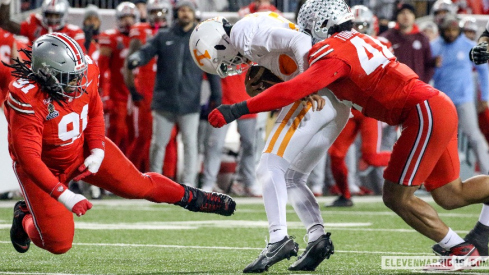There was a time in the not-too-distant past when Columbus, Ohio, was nothing more than an oversized cow town with little hint of evolving into a cosmopolitan American city. Well, that’s exactly what’s happened.
Ohio’s state capital is the 15th-largest city in the country, home to Fortune 500 companies, renowned hospitals, a world-class university, diverse population and burgeoning neighborhoods.
“Today we are surrounded by success,” Mayor Michael Coleman said during his 2014 State of the City address. “The Short North Arts District, the Arena District, the Hilton convention hotel, the North Market and a thriving downtown neighborhood with world-class parks, signature bridges, great restaurants, fun nightspots, convenient retail and thousands of new residents – Columbus has changed dramatically. We have transformed from a great American city to one of America’s greatest cities.”
So what does this mean for sports? A lot. In recent years, the Greater Columbus Sports Commission has increased its push in bringing major sporting events to the city, and its success rate is high.
“We definitely have seen a change in perception of Columbus,” Bruce Wimbish, the sports commission’s director of marketing and communications, told Eleven Warriors. “When we throw our hat in the ring, it gets people’s attention more. Pretty much anything we go after, we go in optimistic and confident that we will get it, if not the year we bid for then in future years.
“We close at about a seven out of 10 rate. It’s so important to get folks here to see the package we have, because it’s a winning package. We like to tell our story and flex our muscles.”
The NCAA men’s basketball tournament and golf’s prestigious President’s Cup are two high-profile events Central Ohio has played host to, and it’s just an opening act. Over the next two years, several U.S. and international events will call Columbus home.
The USA Fencing national championships just ended. In 2015, the NHL All-Star Game and the NCAA men’s basketball tournament come to Nationwide Arena. The U.S. Senior Open will be played at Scioto in 2016 and St. John Arena hosts the NCAA men’s gymnastics championships.
Columbus is bidding on the USA Gymnastics championships (2015 and 2016), U.S. Figure Skating annual meeting (2016), USA Fencing North America Cup (2016), USA Track and Field annual meeting (2017) and NCAA women’s Final Four (2018-2020).
A Super Bowl in Central Ohio will never happen and a Final Four is far-fetched, though the NCAA’s goal of returning to arenas offers hope. The women’s Final Four, which has become a mega event with sellout crowds, is No. 1 on Columbus’s wish list.
“The women’s Final Four is that 10,000-foot goal,” Wimbish said.
The city’s hosting prowess and fans’ positive attendance trend aren’t the only factors working in Columbus’s favor. It’s also become a powerhouse in TV ratings, a sponsor’s dream. Columbus was consistently ranked as a top-10 city for each of the U.S.’s four World Cup games. The same goes for the Super Bowl, Final Four and other major U.S. sporting events – and that’s going against New York, L.A., Chicago and Washington.
The Wall Street Journal recently wrote, “At times this stadium on the northeast coast of Brazil felt like Columbus, Ohio,” in describing the atmosphere at the U.S.’s win over Ghana in the World Cup. Crew Stadium has obtained legendary status relating to the U.S. soccer team, thanks to an unbeaten record.
When outsiders travel to Columbus, there’s almost always an expectation that it will be Middle America to the core – farmland for miles, nothing to do, small city, etc. But once they land at Port Columbus or drive in via several major highways, the mindset changes dramatically.
Steve Ducoff, CEO of the Association of Chief Executives for Sport, is one of those converts. He called ACES’ annual meeting in June, which took place in Columbus, “enlightening.”
“The opportunity to see and hear firsthand from city leaders of the capabilities and observe the professionalism and organizational skills of the Greater Columbus Sports Commission were outstanding and very impressive to our group,” Ducoff said. “Many favorable comments concerning Columbus were mentioned in the post-conference critique sheets. Many of our members are very interested in hosting events in Columbus. Whatever previous impressions were, most were favorable [after] our visit.”
The Greater Columbus Sports Commission operates on a $1.8 million budget, a fraction of other big-time host cities, such as New Orleans and Indianapolis. But it’s managed wisely and the sports commission doesn’t bid on unrealistic events.
Something that could provide an even bigger boost to Columbus is hosting the Democratic National Convention in 2016. Experience Columbus, the city’s marketing wing, said it would be “our Super Bowl.”
“That’s huge,” said Wimbish, adding it would be a defining moment for the city. “It would take Columbus to next level, where it has a national profile and visitors have an expectation before arriving.”
The compactness of downtown, making it pedestrian friendly, neighborhoods like the Short North, German Village, Arena District and Brewery District, which are packed with restaurants, and an abundance of hotel rooms has vaulted Columbus into the national consciousness.
Getting decision-makers to the city remains the top objective in the bidding process, because the sports commission has seen firsthand how much sway Columbus can have once people get on the ground.
“We see it with all the events we have. Sometimes we feel we’re at the forefront of seeing that change,” Wimbish said. “It creates a marketing platform for people. They see Columbus as this and that. We feel when people get here it’s more of an organic and grass roots marketing. It’s stuff you can’t pay for. It’s not a commercial, it’s not a radio spot, it moves a little slower. It’s more word of mouth, but it’s vitally important.”
Perhaps the city’s – and Dublin – most successful undertaking and execution was last fall’s President’s Cup at Muirfield Village. Players raved about it, spectators raved about it and the PGA Tour raved about it. The only negative was the weather.
The event attracted visitors from all over the U.S. – and the world. It brought $22 million in economic impact to Central Ohio and had an attendance of 150,000. The TV coverage also offered a window into Columbus and Dublin. NBC’s coverage was viewed by 800 million residences around the world and included nearly 100 hours of airtime.
“We’ve turned the corner in proving that we are experienced and have expertise in putting on large events. But we struggle with that national image,” Wimbish said. “The PGA said [the President’s Cup] was the best from an organizing standpoint. It re-defined the model as far as collaboration between regions.”
Ohio State and the Columbus Blue Jackets provide free marketing for Columbus from a sports standpoint and as a city. An NBA team in Columbus has long created passionate viewpoints. For now, though, the city will settle for Cavaliers exhibition games.
The Browns have stoked interest from all corners of the state by floating the idea of taking training camp on the road. A destination that makes sense is Columbus. It’s a Browns Backers hotbed and the central location is ideal. Wimbish said there are constant overtures, fact-finding and information shared between the Browns and the city of Columbus.
“We are always open to Browns events,” he said.
The monumental professional event that would draw national attention is a Blue Jackets game in Ohio Stadium. Right now, the focus is on the All-Star Game, but Wimbish coyly said, “The day after the All-Star game, who knows?”
For people, sports are an outlet, almost a fantasy world, where a combination of joy, heartbreak and living vicariously through others exists.
For cities, sports can be an engine to revitalization. Downtown Cleveland underwent a total renaissance when Jacobs Field and Gund Arena were constructed. Cincinnati, Baltimore and Toledo, to a lesser extent, have seen similar downtown revivals after sports venues were constructed.
The same has occurred in Columbus with Nationwide Arena, Huntington Park and the surrounding area.
“I think the urban entertainment district, Columbus has one of the best,” Wimbish said. “We’ve been benchmarked by other cities that are contemplating theirs with an arena as the anchor. It’s an equation that really works, and it really works for sports.
“We’re a city on the rise.”


